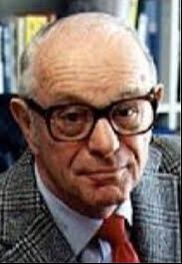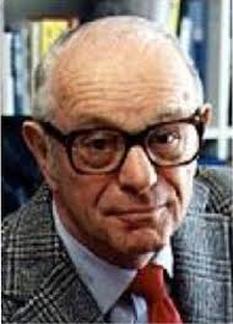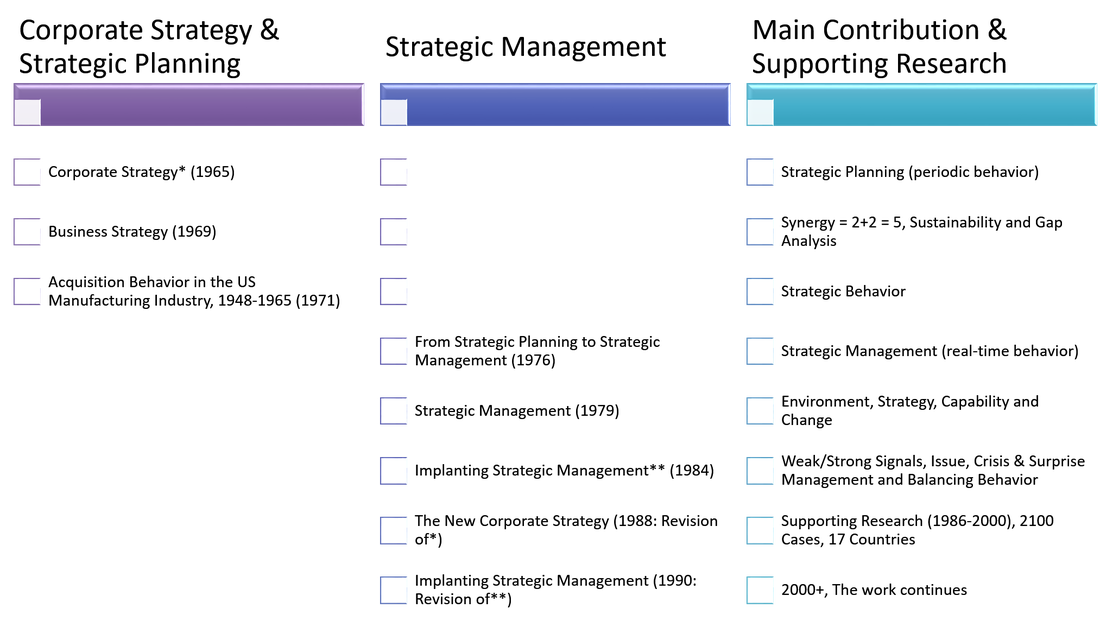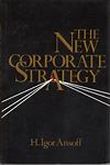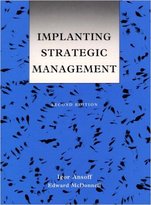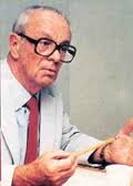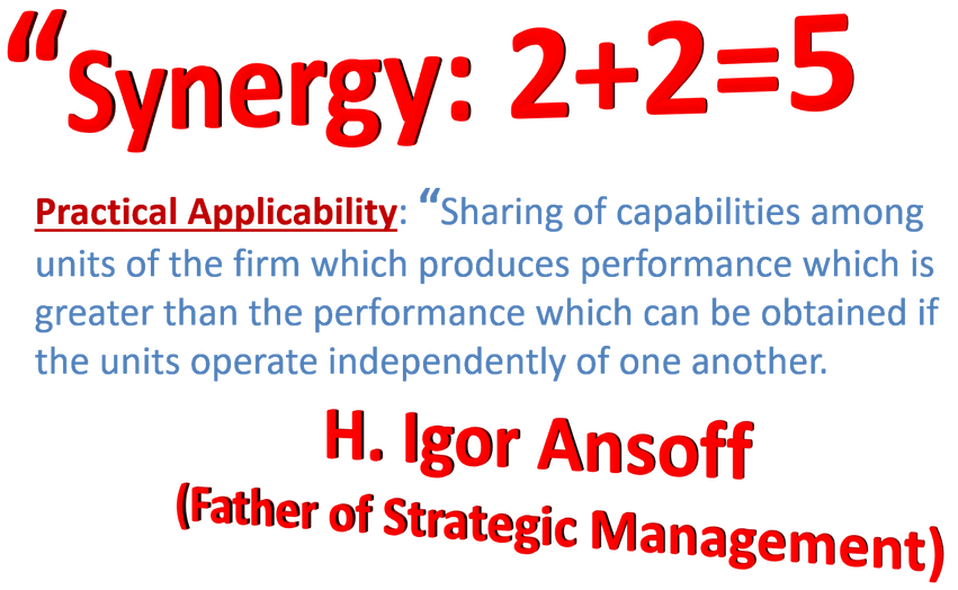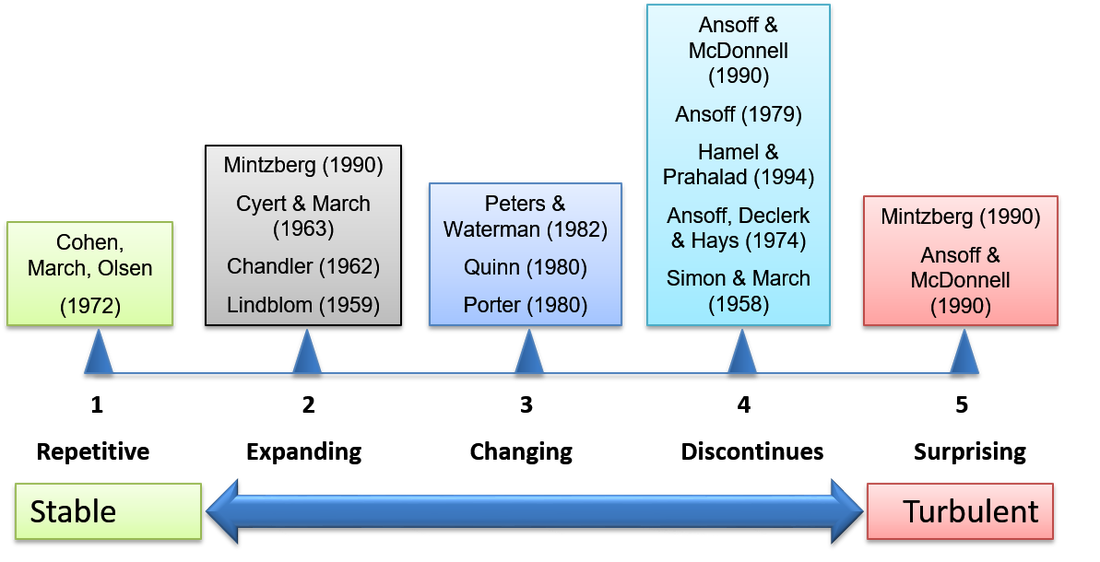H. Igor Ansoff's Contributions
Best viewed on desktops and laptops; phone and tablets, please be patient. Thank you.
What Management Icons Have Said About AnsoffIt was no accident that Tim Hindle, in The Economist’s 2008 series on the world’s most influential management thinkers, dedicated its inaugural profile to “the father of modern strategic thinking”, Igor Ansoff. As the profile noted, many of Ansoff’s highest payoff strategic principles were made famous by other gurus who followed his lead. Competitive advantage (Porter), core competence (Hamel/Prahalad) and “sticking to your knitting” (Peters), for example, all sourced from Ansoff’s paradigm shifting concepts which have had massive impact on global business.
Link to the Economist 2008 Article |
Please Click Image for More
|
“Igor Ansoff ‘invented’ strategic planning and strategic management." Philip Kotler
“Igor Ansoff is the father of strategic management.” Henry Mintzberg
“Truly the godfather of Corporate strategy.” Gary Hamel
"Igor Ansoff was the father of modern strategic thinking." Tim Hindle
"In 1965 came the Bible of strategic planning, H. Igor Ansoff’s monumental Corporate Strategy." Richard Koch
“Igor Ansoff is the father of strategic management.” Henry Mintzberg
“Truly the godfather of Corporate strategy.” Gary Hamel
"Igor Ansoff was the father of modern strategic thinking." Tim Hindle
"In 1965 came the Bible of strategic planning, H. Igor Ansoff’s monumental Corporate Strategy." Richard Koch
We are completing and advancing the legacy of Dr. H. Igor Ansoff
This work introduces principles, concepts, and tools of Strategic Management for Performance
|
PLease be warned that sadly and unfortunately some publications that carries the name of H. Igor Ansoff are not his work. Kindly, before purchasing any of Ansoff's work check the overview of H. Igor Ansoff's work to help you determine authenticity. Link to Details
|
H. Igor Ansoff
|
Early Life
Young Adult
Career
|
In 1993 Ansoff Presented
|
World Acknowldgement
|
- He was one of the Business Thinkers included in the Business Encyclopedia in the US, 2002
- Ansoff’s work was recognized as the 2d of the top 100 Management Books in Europe compiled in the Netherlands - Was listed as number 27 of the top 50 thinkers in the world in 2001 - Received 5 honorary doctorates from: · University of Bath · Stockholm School of Economics · Twente University · Helsinki School of Academia · Academia Italiana de Economia Aziendale - Became Fellow at the: · Academy of Management · International Academy of Management - Received the Silver Medal from the Strategic Management Society - The Father of Strategic Management |
Prominent Experts Said
Warning
Do not Read this Book
(# 1 on Slide Show)
Ansoff (RIP) passed 17+ years before this happened
(For details view slide show below)
Do not Read this Book
(# 1 on Slide Show)
Ansoff (RIP) passed 17+ years before this happened
(For details view slide show below)
Malcolm McDonald
Ansoff Matrix
The Oxford College of Marketing
Ansoff Matrix
The Oxford College of Marketing
Highlights in Shaping Theories and Practice of Strategic Thinking
Contribution1. Founder of the concept of Strategic Management:
. was the first to coin the term Strategic Planning (1965) . and, later on the term Strategic Management (1972) 2. First to introduce the Umbrella Concept suggesting that different solutions are needed under different levels of turbulence of the Environment. These solutions include business and corporate level strategies. 3. Empirically validated theories, proven in thousands of situations around the world 4. Developed the Strategic Success Diagnosis model to determine and assess an Organization’s external Environment as to: · where an Organization is presently, · where it should be, and · how to do it 5. The Strategic Success Diagnosis applies to all Environment Serving Organizations, for profit, not-for profit and governmental agencies 6. Concentrated on the strategies and capabilities needed at the high levels of turbulence of the Environment by introducing the Real-Time Strategic Management concept 7. Developed many practical process tools and technologies applied in practice |
ValidationH. Igor Ansoff came to USIU in 1983 and founded the School of Strategic Management. He is the only one in the field who has validated his theory supported with consistently high results.
There are over 45 Doctorates awarded in the Strategic Management discipline verifying Ansoff’s approach. The findings were empirically validated. All results are available for review at a special edition Compendium of Strategic Management Research. Graduates of the Strategic Management program, from both the Master’s and the Doctoral programs, are holding high positions in industry and academia around the world. |
Major Contributions
Judge the results by the criterion of relevance to reality, and not by the more common criterion of proper attribution to prior work.
Among the material developed by H. Igor Ansoff, three contributions shaped and influenced theories of strategic thinking: the concept of environmental turbulence, the contingent strategic success paradigm and real-time strategic management.
Environmental Turbulence
|
It is a model of the business environment consisting of five turbulence levels, ranging from placid and predictable to highly changeable and unpredictable. For each level of turbulence, Ansoff hypothesized and proven that a different behavior is needed in each level which optimizes an organization’s profitability (1979). A simplified description of the levels of turbulence is shown.
In order for an organization to balance both the strategic and operational components, it has to look at both the external and internal environments and align its position to achieve good results. This led to the realization that analysis and interpretation of the organization’s external environment is pivotal to its strategic success. Ansoff constructed a five-point scale of ‘turbulence levels’. These are described by a combination of the changeability of events in the environment. The external environment serves as the key indicator for the organization’s strategic position and its inaccurate perception is "strategic myopia". |
|
Contingent Strategic Success Paradigm
|
Ansoff used the model of turbulence to construct a strategic success paradigm based on three variables: the turbulence levels of the organization’s environment; the aggressiveness of the organization’s strategic behavior in the environment; and the responsiveness of the organization’s management to changes to the environment.
The paradigm states that the financial performance of an organization is optimized when the aggressiveness and management responsiveness of the organization both match the turbulence of the organization’s environment (1979). The fact that an organization can be successful at one time and unsuccessful in another led Ansoff to realize that an organization’s strategy has to be aligned with the level of turbulence in which it operates; otherwise its financial performance drops. A matching triplet was designed to show the link between the environment, strategy and capability. Ansoff challenges the validity of prescriptions for organizations’ success established in the literature. His model does not deny the validity of these prescriptions; on the contrary it places them in a context in which each is valid under a particular set of circumstances dependent on the level of turbulence of the environment. For instance, specific strategic actions could be very appropriate in one level but not so when applied in another level. In order for organizations to attain maximum profitability, they have to interpret the level of environmental turbulence and align their strategy and capability accordingly. While some maintain that there is one prescription for success, Ansoff has empirically proven in a total of more than 2,100 cases around the world (1983 - 1999) that different environments call for different corporate responses. Ansoff developed a diagnostic tool for working managers to diagnose the readiness of their organizations to succeed in turbulent environments. It enables an organization to identify the existence of any gap between its future environment, its current strategy and its current capability. Managers can also use the paradigm to select the strategic approach proposed by the academics and consultants which best fit in the appropriate level of turbulence. There are quite a number of options applicable in each level of turbulence. However, the same strategic option does not guarantee optimal financial performance under all levels of turbulence. One can be appropriate for one but inappropriate for another. |
|
Real-time Strategic Management
|
Ansoff’s third contribution is in the applicable strategies to be used in high turbulence environments. The distinct characteristics of the real-time strategic management include the following:
1. Application of strategic diagnosis to assess the organization’s readiness to succeed in the high turbulent environment 2. Priority attention to ensuring the appropriate mind-set of key managers and the firm’s culture to respond to this type of environment 3. Anticipation of encountering resistance to change, accompanied by early steps to convert the resistance into acceptance and support of change 4. Risk estimates assessment surrounding each major strategic decision 5. Designing the strategic planning and positioning of the organization 6. Introduction of the real-time strategic control mechanism 7. Revision mechanism of the organization’s current strategy (when there are indications that it does not longer work) |

